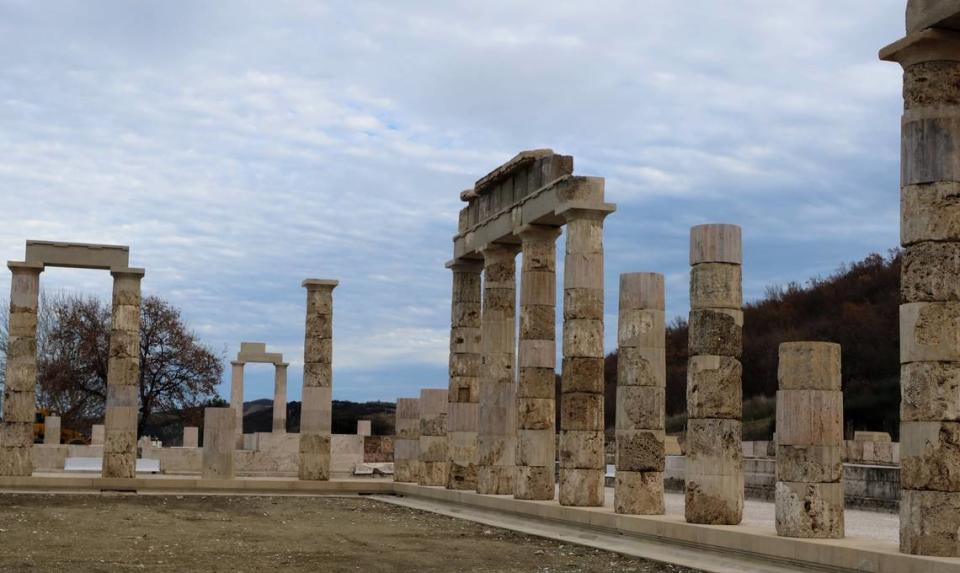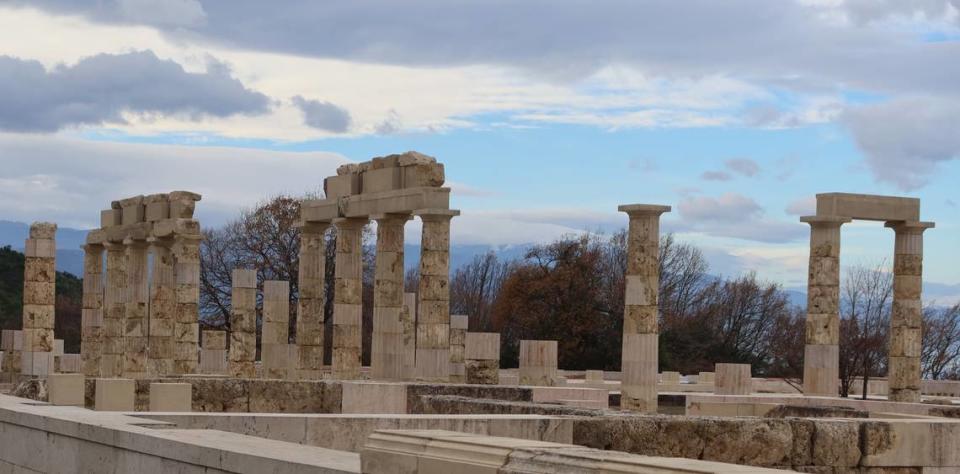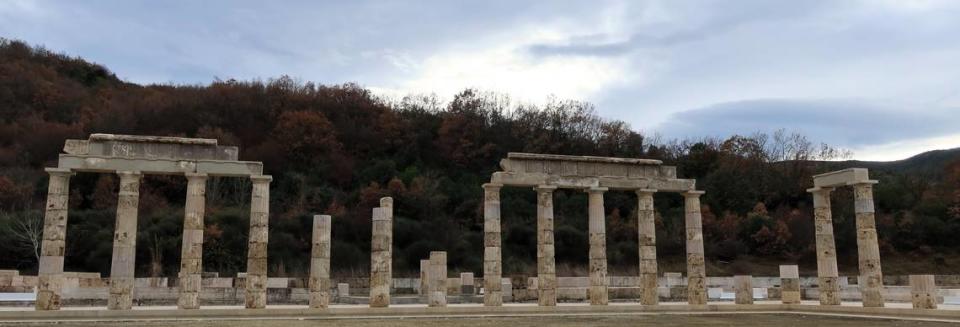Ancient palace where Alexander the Great became king reopens in Greece. Look inside
- Oops!Something went wrong.Please try again later.
Over 2,300 years ago, a 20-year-old man was crowned king in a sprawling palace in Greece. He went on to build an empire that stretched to modern-day Afghanistan and left a legacy felt today. His name was Alexander the Great.
Now, visitors can wander through the monumental palace where his rule began.
Archaeologists began restoration work on the Palace of Aigai in 2007, the Greek Ministry of Culture and Sports said in a Jan. 4 news release. The palace was the largest building in ancient Greece and part of the empire’s capital city. Today, it sits near Vergina in northern Greece.
The Palace of Aigai was built by Alexander the Great’s father, Phillip II, and completed in 336 B.C., officials said. Alexander was proclaimed king of Macedonia in the monumental complex that same year.

During his lifetime, Alexander the Great significantly expanded his empire, stretching from modern-day Greece to Egypt and across modern-day Turkey to Afghanistan, according to Britannica. After his death in 323 B.C., he became a legendary figure.
The Palace of Aigai was destroyed in the second century B.C. after the ancient Romans conquered the Greeks, officials said in the release.

Photos shared by the Greek ministry on Facebook show the restored palace. Columns line the walkways and form a square-shaped courtyard. The courtyard could hold up to 8,000 people, officials said.
Around the outside of the courtyard are intricate mosaic floors, an aerial photo shows.
The palace’s 16-year-long restoration project involved excavating the ruins, preserving the findings and piecing back together any surviving fragments, the release said. Missing sections were replicated and replaced.
In total, the project cost about $22.3 million and was partially financed by the European Union, the release said.

The palace, along with a neighboring royal burial site, is a UNESCO world heritage site. During restoration, the palace was “partly accessible” to visitors, according to UNESCO.
The palace reopened to the public on Sunday, Jan. 7, the Associated Press reported.
Vergina is about 300 miles northwest of Athens.
Google Translate was used to translate the Facebook post and news release from the Greek Ministry of Culture and Sports.
Dig at ancient cemetery reveals colorful masks and artifacts. See the finds from Egypt
‘Semi-buried boulders’ near 3,000-year-old Italy village stumped experts — until now
Mysterious medieval wall spanning 250 miles in Mongolia is studied for the first time

